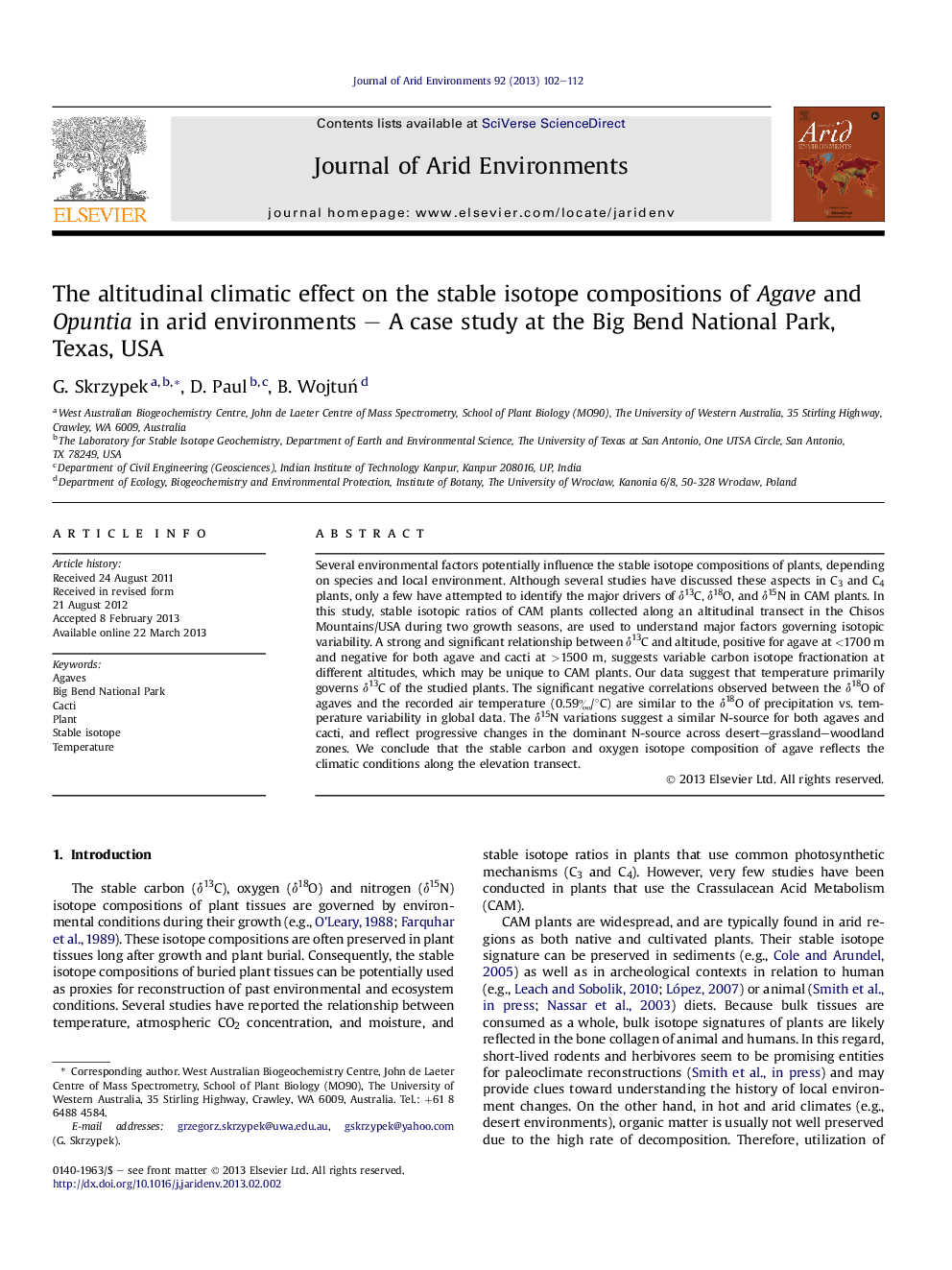| کد مقاله | کد نشریه | سال انتشار | مقاله انگلیسی | نسخه تمام متن |
|---|---|---|---|---|
| 4393120 | 1618265 | 2013 | 11 صفحه PDF | دانلود رایگان |

Several environmental factors potentially influence the stable isotope compositions of plants, depending on species and local environment. Although several studies have discussed these aspects in C3 and C4 plants, only a few have attempted to identify the major drivers of δ13C, δ18O, and δ15N in CAM plants. In this study, stable isotopic ratios of CAM plants collected along an altitudinal transect in the Chisos Mountains/USA during two growth seasons, are used to understand major factors governing isotopic variability. A strong and significant relationship between δ13C and altitude, positive for agave at <1700 m and negative for both agave and cacti at >1500 m, suggests variable carbon isotope fractionation at different altitudes, which may be unique to CAM plants. Our data suggest that temperature primarily governs δ13C of the studied plants. The significant negative correlations observed between the δ18O of agaves and the recorded air temperature (0.59‰/°C) are similar to the δ18O of precipitation vs. temperature variability in global data. The δ15N variations suggest a similar N-source for both agaves and cacti, and reflect progressive changes in the dominant N-source across desert–grassland–woodland zones. We conclude that the stable carbon and oxygen isotope composition of agave reflects the climatic conditions along the elevation transect.
► δ13C of CAM plants Agave and Opuntia shows significant correlation with altitude.
► The trend for Agave is changing ∼1500–1700 m a.s.l. from positive to negative.
► These observations suggest the existence of different fractionation factors for different temperatures.
► δ18O of Agave correlates with Tair; 0.59‰/°C is similar to precipitation globally.
► δ15N of both plants reflects a N dominant source across desert–grassland–woodland.
Journal: Journal of Arid Environments - Volume 92, May 2013, Pages 102–112